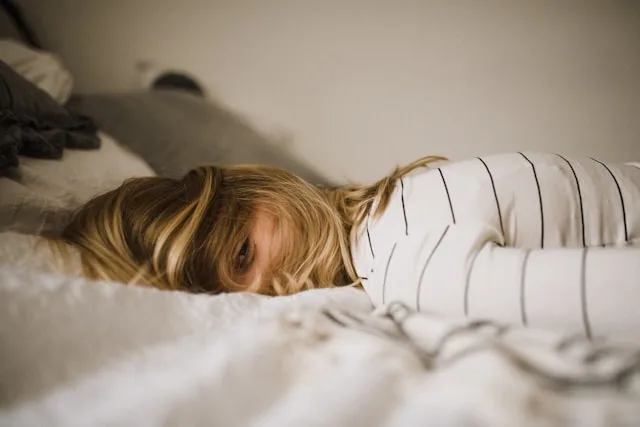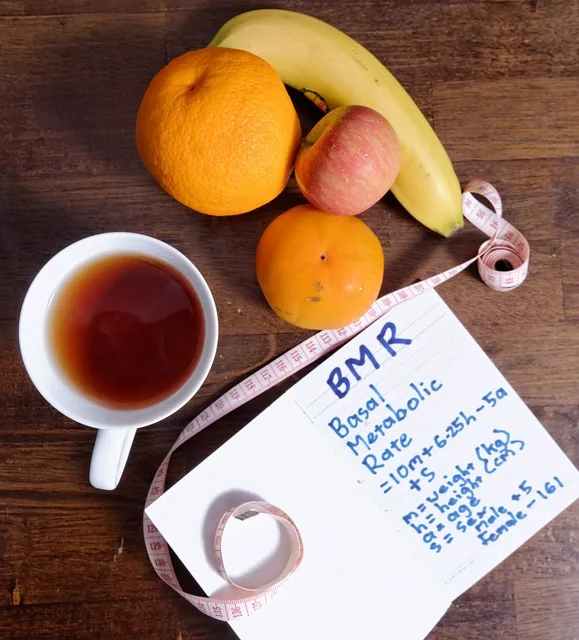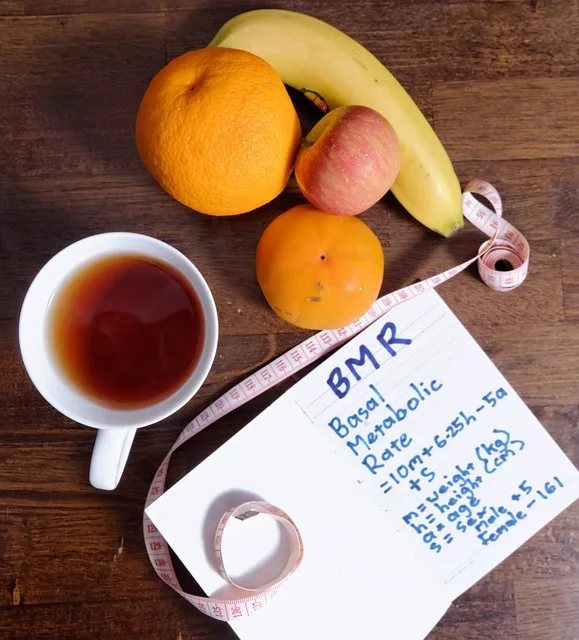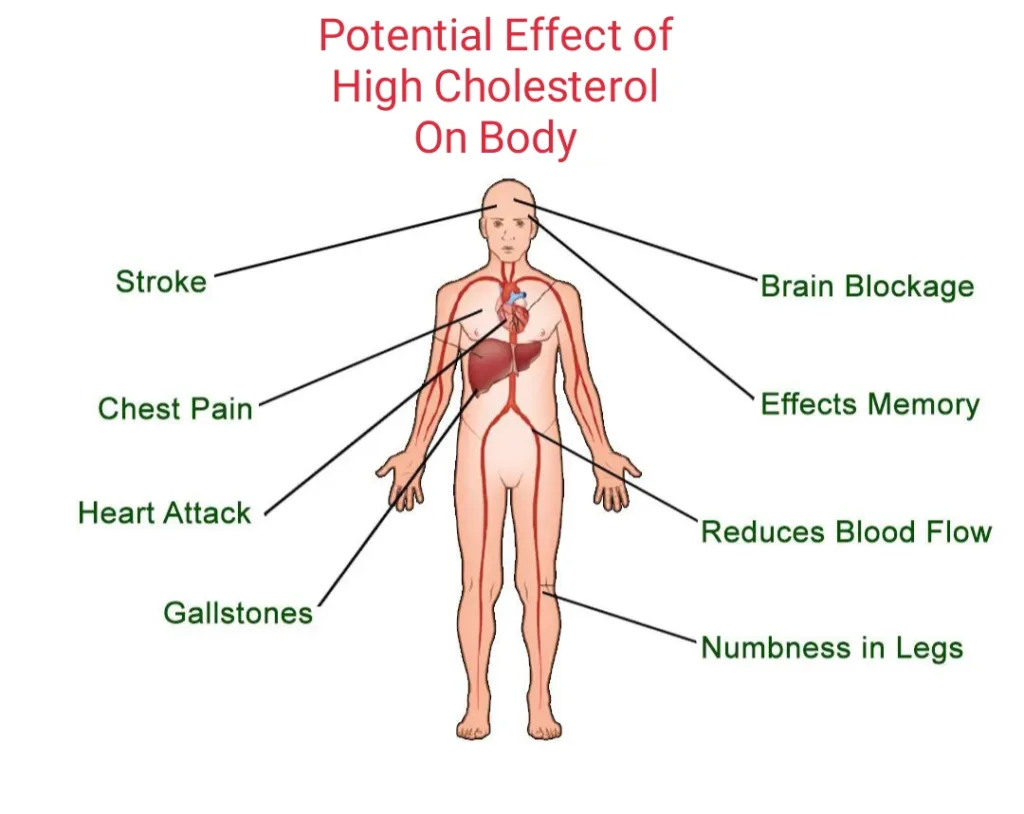Alzheimers disease, a chronic and progressive neurological disorder involving cognitive and functional disabilities, causes most cases of dementia.
Part of the insidious nature of Alzheimer’s is its calm but gradual and persistent manifestation, which tends to get worse over time.
In This Article
What is Alzheimer’s Disease?
Alzheimer’s disease is a progressive and irreversible neurological disorder that affects the brain, particularly the areas responsible for memory, thinking, and behavior. It is the most common cause of dementia among older adults and is characterized by a gradual decline in cognitive abilities, including memory loss, difficulty with language, disorientation, poor judgment, and changes in mood and behavior.
The disease is caused by the buildup of abnormal proteins, such as beta-amyloid and tau, in the brain, which form plaques and tangles that interfere with normal brain function and cause brain cells to die. While the exact cause of Alzheimer’s disease is not fully understood, it is believed to be the result of a combination of genetic, environmental, and lifestyle factors.
There is currently no cure for Alzheimer’s disease, but there are treatments available that can help manage symptoms and improve quality of life for people with the disease. These may include medications to help with memory and behavior, as well as non-pharmacological interventions such as cognitive and behavioral therapy, exercise, and social engagement.
As we best understand it, the cognitive functions of the mind take place in the brain, an organ that is not recognized as important (often not recognized at all) in ancient yogic literature, according to Patanjali’s yogic proverb, chitta vrtti nirodoha, “still fluctuating mind,” being the leitmotif of yoga. This major mammalian organ may have conditions that are far more consequential in daily life than “monkey mind”—which certainly forms mostly arise from within – the purpose of yoga is to consciously subdue, exploit, or manifest.
Among the most common brain diseases is dementia, a group of symptoms that disrupt and disturb normal cognitive function and which are often mistakenly thought to be specifically associated with aging.
Yoga may have an important role in reducing the incidence and symptoms of dementia and its most common form, Alzheimer’s disease, known from the early twentieth century work of the German psychiatrist Alois Alzheimer.
The pathophysiological process of Alzheimer’s begins to develop before mild cognitive impairment is experienced that defines its early diagnosis stage. In its pre-delusional (or preclinical) stage, symptoms include a generalized apathy, lack of attention to basic daily activities, irritability, and weak relational memory. As this mild cognitive impairment progresses, there are more problems with memory, particularly in relation to new experiences. Some have difficulties with memory, the use of written and spoken language that inhibit basic communication, along with simple tasks such as driving a car.
As the condition worsens, it may be difficult to remember even close friends and loved ones, there may be manifestations of confusion, and physical problems such as urinary incontinence may occur. These conditions may worsen in their most advanced stage, with even passing moments of clear recollection and recognition, although now entirely dependent on the care of others.
Alzheimers Disease Causes and Risk Factors
Alzheimer’s Disease is a complex disorder that scientists believe is caused by many things, including genetics, lifestyle, and environment. Some things that can increase the risk of developing Alzheimer’s Disease cannot be changed, like getting older, having a family history of the disease, or inheriting certain genes. But there are other things that we might be able to change to reduce our risk.
One thing that we can do to reduce our risk of Alzheimer’s Disease is to live a healthy lifestyle. Eating healthy foods, exercising regularly, and avoiding things like smoking and excessive alcohol use can all help promote brain health and reduce the risk of developing Alzheimer’s Disease. Scientists are also studying other potential risk factors, like head injuries or exposure to certain toxins, to try to understand how these factors might contribute to the development of the disease.
Although genetic factors appear to be important in many cases of Alzheimer’s, its causes remain largely mysterious, despite billions of dollars of research into its etiology and pathophysiology. 1
The most promising theories involve protein synthesis that affects neurotransmitters in ways that are described as “tangles” inside the brain, a pathology that consists of genetic markers.
There is currently research exploring many other factors, including vascular and metabolic status, diet, exercise, social interactions, and lifelong mental stimulation (i.e., new learning, which are the promising fields of neuroplasticity and psychoneuroimmunology currently exploring).2
It’s important to remember that Alzheimer’s Disease is a complex disorder, and we still have a lot to learn about how it develops and how to treat it. But by understanding the different risk factors for the disease and taking steps to promote brain health, we can help reduce our risk and promote a healthier future.
Genetic factors
Scientists have discovered that genes play a role in the development of Alzheimer’s Disease. A person who has a family history of the disease is more likely to develop it than someone who doesn’t. Researchers have identified several genes that may contribute to the development of Alzheimer’s Disease, such as the ApoE gene. However, having these genes does not guarantee that a person will develop the disease.
There are two types of genes that can influence whether someone gets the disease: risk genes and deterministic genes. Risk genes increase the chances of getting the disease, while deterministic genes actually cause the disease.
Some genes that have been linked to Alzheimer’s Disease fall into both categories. However, it’s important to note that deterministic genes are very rare and only account for less than 1% of all cases of Alzheimer’s Disease.
While genes can increase the risk of developing Alzheimer’s Disease, it’s essential to remember that other factors, like lifestyle and environment, can also contribute to the disease. Eating healthy foods, exercising regularly, and avoiding things like smoking and excessive alcohol use can all help promote brain health and reduce the risk of developing Alzheimer’s Disease, even if someone has a genetic predisposition for the disease.
Age and lifestyle factors
As we get older, our risk of developing Alzheimer’s Disease increases. While age is the biggest risk factor, it’s important to remember that Alzheimer’s is not a normal part of getting older. It’s a disease that affects the brain and can cause problems with memory, thinking, and behavior.
Lifestyle factors such as lack of exercise, poor diet, and smoking can also increase the risk of developing Alzheimer’s Disease. Studies have shown that people who exercise regularly, eat a healthy diet, and avoid smoking are less likely to develop the disease.
It is more common in older adults, particularly those over 65 years of age. After the age of 65, the risk of developing the disease doubles every five years. 3 By the time someone reaches the age of 85, their risk of developing Alzheimer’s Disease is almost one-third.
While we can’t stop the aging process, there are things we can do to help promote brain health and reduce the risk of developing Alzheimer’s Disease as we get older. Eating a healthy diet, exercising regularly, staying mentally and socially active, and getting enough sleep are all important ways to help keep our brains healthy and reduce our risk of developing Alzheimer’s Disease.
Other potential risk factors
There are other factors that may contribute to the development of Alzheimer’s Disease. These include head injuries, high blood pressure, diabetes, and sleep disorders. Exposure to certain toxins or chemicals may also increase the risk of developing Alzheimer’s Disease.
Taking care of our brain and heart health can help reduce the risk of developing Alzheimer’s Disease and other types of dementia. Here are some things we can do to protect our brain and heart:
- Protect our head: Head injuries can increase the risk of developing dementia later in life. We can protect our brain by wearing helmets when playing sports, buckling our seat belt in the car, and making our home safe to prevent falls.
- Take care of our heart: The brain needs a good supply of blood to function properly, and the heart is responsible for pumping blood to the brain. Conditions like heart disease, diabetes, stroke, high blood pressure, and high cholesterol can all increase the risk of developing Alzheimer’s Disease. We can work with our doctor to monitor our heart health and treat any problems that arise.
- Live a healthy lifestyle: Eating a healthy diet, staying socially active, avoiding tobacco and excess alcohol, and exercising our body and mind can all help keep our brain and heart healthy. These strategies for overall healthy aging may help reduce the risk of developing Alzheimer’s Disease and other types of dementia.
By taking care of our brain and heart health, we can help protect ourselves against Alzheimer’s Disease and other types of dementia as we age.
Symptoms
Memory loss is a major symptom of the disease.4
As much has been written about the experiences of the caregiver with another’s Alzheimer’s as it has about the subjective experience of the condition.
Early signs include difficulty remembering recent conversations or events. As Alzheimer’s disease progresses, memory weakens and other symptoms develop.
There is a wide range of emotions described by people with Alzheimer’s, including a growing sense of loss – the loss of everything that is most meaningful in life, starting with the feeling of losing connection with the people most dear in life, and with feelings of isolation and loneliness.
At first, one with Alzheimer’s disease may be aware of having difficulty remembering the things and organizing the thoughts. A family member or a friend may be more likely to notice how the symptoms worsen.
The worsening of the condition involves deep sadness, confusion, and anxiety, and these feelings are accompanied by fear, paranoia, and anger.
People with Alzheimers disease may:
- Repeat statements and questions over and over
- Forget appointments, or events, or conversations and don’t remember them later
- Misplace property on a regular basis, often putting them in illogical places
- Getting lost in familiar places
- Eventually forgets the names of family members and everyday objects
- Has trouble identifying objects, finding the right words to express thoughts or participating in conversation
How Alzheimer’s Heals
Steven Sabat provides a practical prism for looking at the complexities of the subjective experience of Alzheimer’s. 5
The depth of her work lies in uncovering that there can be beauty and value in the midst of even the most troubling human problems, an antidote to the stigmatized decisions that will further affect Alzheimer’s as well as their caregivers.
Although medical science is making advances in its understanding of Alzheimer’s disease in ways that may slow healing, yoga and other complementary healing modalities provide methods that may help prevent Alzheimer’s and benefit the lives of the people living Alzheimer’s today as well as their caregivers.
Healing with Yoga
While there is no cure for Alzheimer’s, recent research suggests that yoga and meditation may play a role in preventing and improving symptoms of the progressive disease, which is the most common form of dementia and the sixth leading cause of death in the United States.6
Several recent studies claim to show promise in treatments for Alzheimer’s and yoga for their caregivers. Unfortunately, most studies are poorly designed.
Last year, the first study to suggest that memory loss could be reversed included yoga and meditation as part of a complex, 36-point therapeutic program.
Another study found that yoga and meditation can help Alzheimer’s and dementia patients and their caregivers to socialize and feel better.
One of the strongest studies supports the benefits of yoga for caregivers of Alzheimer’s.
For example, a study conducted at the UCLA Longevity Center found improved functional connectivity in verbal neural performance after twelve weeks of Kundalini yoga classes and Memory Enhancement Training (MET). Whether there was specific efficacy in certain elements of yoga classes (tuning in, warm up, pranayama, kriya and meditation) or only in combination with them, and the efficacy of these techniques in conjunction with or separately from MET training, was not studied. 7
The study also had a very small sample size. A more promising and better-designed study of The Sit “N” Fit Chair yoga program has shown effects among older adults in improving function in several physical measures, including gait and balance. The primary limitation of this study is its very small sample size and the absence of a control group. 8
Physical Benefits of Yoga
If you want to improve your physical health, consider giving yoga a try! It’s a great way to exercise your body and reap these benefits. Here are some physical benefits of doing yoga:
- Improved flexibility, strength, and balance: Yoga poses stretch and strengthen your muscles, helping you become more flexible, strong, and balanced.
- Reduced inflammation and pain: Practicing yoga has been shown to reduce inflammation and pain in the body, making it a great option for people with conditions like arthritis or chronic pain.
- Improved cardiovascular and respiratory function: Yoga can also help improve your heart and lung health by increasing your cardiovascular and respiratory function.
- Boosted immune system function: Doing yoga may also help boost your immune system, helping your body fight off illnesses and stay healthy.
Mental and Emotional Benefits of Yoga
Yoga is not only good for our physical health, but it also has many mental and emotional benefits. Here are some of the ways yoga can help our mental and emotional well-being:
- Reduced stress, anxiety, and depression: Yoga helps to reduce stress and anxiety by calming the mind and relaxing the body. It can also help to alleviate symptoms of depression.
- Improved mood and emotional regulation: Practicing yoga regularly can improve our overall mood and help us better regulate our emotions. It can also improve our ability to manage our reactions to stressful situations.
- Improved sleep quality: Yoga can help us get better quality sleep by reducing stress and promoting relaxation.
- Increased mindfulness and self-awareness: Yoga helps us become more mindful and aware of our thoughts, emotions, and physical sensations. This can lead to greater self-awareness and a better understanding of our inner selves.
Specific Conditions that Yoga can Help Heal
Medications
Medications are often used to help manage symptoms of various conditions, but yoga can also be used as a complementary therapy to improve overall well-being. Yoga is a mind-body practice that involves physical postures, breathing techniques, and meditation. When practiced regularly, yoga can help reduce stress and anxiety, improve flexibility and strength, and promote relaxation.
For individuals taking medications, yoga can help manage side effects such as weight gain, fatigue, and mood changes. It can also help individuals with chronic conditions such as diabetes, high blood pressure, and heart disease. Yoga can improve blood sugar control, lower blood pressure, and reduce the risk of heart disease.
Yoga can also be a helpful addition to the treatment plan for mental health conditions such as depression and anxiety. It can improve mood, reduce symptoms of anxiety, and promote relaxation. For individuals with addiction, yoga can be a useful tool for managing stress and cravings, and promoting overall well-being.
Non-pharmacological interventions
Non-pharmacological interventions are treatments that don’t involve medication. These interventions can include things like talk therapy, exercise, meditation, and relaxation techniques, such as yoga. Yoga is a popular non-pharmacological intervention that can help improve physical, emotional, and mental health.
One of the reasons yoga is effective is that it focuses on the mind-body connection. By practicing yoga, individuals can learn to be more aware of their physical sensations, emotions, and thoughts. This can help them better manage stress and anxiety, as well as improve overall well-being.
Yoga can also improve physical health by reducing chronic pain, improving flexibility and balance, and reducing the risk of injury. It can be practiced at home, in a class setting, or with a qualified instructor. There are many different types of yoga, including Hatha, Vinyasa, and Restorative, so individuals can choose a style that fits their needs and preferences.
Caregiving and support
Caregiving can be a demanding and stressful role, and yoga can be a helpful tool for caregivers to manage their stress and improve their overall well-being. Practicing yoga can help caregivers take a break from their responsibilities and focus on their own physical, emotional, and mental health.
Yoga involves physical postures, breathing exercises, and meditation, which can all help reduce stress and promote relaxation. Physical postures, also known as asanas, can help caregivers release tension in their muscles and improve their flexibility and strength. Breathing exercises, also known as pranayama, can help calm the mind and reduce feelings of anxiety or overwhelm. Meditation can also be helpful for caregivers to clear their minds and focus on the present moment.
In addition to the physical and mental benefits, yoga can also be a social activity for caregivers. Attending yoga classes or practicing with a group can provide a sense of community and support. This can be particularly helpful for caregivers who may feel isolated or disconnected from others due to their caregiving responsibilities.
Chronic pain
Chronic pain is a condition where a person experiences persistent pain in one or multiple areas of the body for more than 3-6 months. It can be caused by a number of factors, including injury, nerve damage, and medical conditions such as arthritis or fibromyalgia. Chronic pain can have a significant impact on a person’s daily life and can lead to depression, anxiety, and decreased physical activity.
Yoga has been shown to be an effective complementary therapy for managing chronic pain. The physical postures, breathing exercises, and meditation techniques used in yoga can help improve flexibility, reduce muscle tension, and promote relaxation. Yoga can also help reduce stress, which is a common trigger for chronic pain.
Studies have found that practicing yoga can reduce pain intensity and improve physical function in individuals with chronic pain. In addition, yoga can help improve mood and quality of life for those living with chronic pain. It is important to note that yoga should be used alongside other medical treatments and under the guidance of a healthcare provider. It may be necessary to modify poses or use props to accommodate for individual needs and limitations.
Anxiety and depression
Anxiety and depression are common mental health conditions that can affect people of all ages, including children. Yoga is a mind-body practice that has been shown to be effective in reducing symptoms of anxiety and depression.
Yoga incorporates physical postures, breathing exercises, and meditation. These practices help to calm the mind and reduce stress levels in the body. Yoga also encourages mindfulness, which is the practice of being present and aware of your thoughts, feelings, and surroundings. Mindfulness can help individuals become more aware of negative thought patterns and learn how to manage them.
Studies have shown that practicing yoga can lead to a reduction in symptoms of anxiety and depression. Yoga can help to decrease levels of the stress hormone cortisol, which can contribute to feelings of anxiety and depression. Additionally, yoga has been shown to increase levels of GABA, a neurotransmitter that is involved in regulating mood.
PTSD and trauma
Post-Traumatic Stress Disorder (PTSD) is a mental health condition that can develop after a person experiences or witnesses a traumatic event, such as a natural disaster, combat, or assault. Symptoms of PTSD may include flashbacks, nightmares, avoidance behaviors, and mood changes.
Yoga has been shown to be an effective complementary therapy for individuals with PTSD. Yoga helps regulate the nervous system and reduce the physiological effects of stress. It can also help individuals develop coping skills and increase feelings of relaxation and well-being.
Yoga practices that may be helpful for individuals with PTSD include breathwork, gentle movement, and meditation. Mindful breathing exercises can help reduce symptoms of anxiety and panic, while gentle movement can help release physical tension and promote relaxation. Meditation can also be helpful in developing awareness and acceptance of present-moment experiences, which can help individuals process and cope with traumatic memories.
Addiction
Addiction is a complex condition that affects both the mind and body. While traditional addiction treatment often involves medication and therapy, yoga can be used as a complementary therapy to support recovery.
Yoga can help with addiction in several ways. Firstly, it provides a healthy coping mechanism that can replace the addictive behavior. Rather than turning to drugs or alcohol, individuals can turn to yoga for stress relief and emotional regulation. Yoga also helps to reduce anxiety and depression, which are common triggers for substance abuse.
In addition, yoga helps to strengthen the mind-body connection. Addiction can be isolating, and individuals may feel disconnected from their bodies and emotions. Through yoga, individuals can learn to reconnect with themselves and their physical sensations. This can help them to better understand their triggers and cravings, and to develop greater self-awareness.
Finally, yoga can help to promote overall health and well-being, which can support recovery. It can improve physical fitness, sleep, and mood, all of which can help individuals to feel better and stay motivated in their recovery journey.
Eating disorders
Yoga can be helpful in the management of eating disorders because it promotes a healthy mind-body connection. Eating disorders can be complex and involve distorted thoughts and feelings about food and the body. Yoga can help individuals develop a better understanding of their body and promote self-acceptance and self-care.
Yoga can also help individuals with eating disorders develop mindfulness and awareness around their eating habits. This can include learning to listen to hunger and fullness cues and becoming more aware of emotional triggers for disordered eating behaviors.
Practicing yoga can also help reduce stress and anxiety, which can be common triggers for disordered eating behaviors. Regular yoga practice can help individuals with eating disorders develop coping skills and reduce the urge to engage in harmful behaviors.
Incorporating Yoga into a Healing Practice
Yoga can be a helpful tool for healing, but it’s important to find the right style of yoga that works for you. There are many styles of yoga, so it’s a good idea to try a few and see which one feels the best. Some styles are more vigorous and physical, while others are more gentle and relaxing.
Once you find a style of yoga you enjoy, it’s essential to create a regular practice routine. This can help you experience the benefits of yoga more fully. Even just a few minutes of yoga each day can make a big difference.
It’s also essential to adapt yoga to your individual needs and abilities. Everyone’s body is different, so it’s essential to listen to your body and do what feels comfortable for you. If you have any injuries or health conditions, talk to your doctor or a yoga instructor about modifications you can make to your practice to accommodate your needs.
Top 10 yoga poses for Alzheimer’s disease
- Mountain Pose (Tadasana): Stand with your feet hip-width apart and arms by your side. Inhale and lift your arms up towards the ceiling, bringing your palms together above your head. Exhale and lower the arms back down to your sides.
- Tree Pose (Vrikshasana): Stand with your feet hip-width apart and arms by your side. Shift your weight onto the left foot and place your right foot on the left thigh. Balance here for a few breaths, then switch sides.
- Cat and Cow Pose (Marjaryasana/Bitilasana): Start on your hands and knees, with your wrists under your shoulders and your knees under your hips. Inhale and arch your back, looking up towards the ceiling (Cow Pose). Exhale and round your spine, looking towards your navel (Cat Pose).
- Downward-Facing Dog Pose (Adho Mukha Svanasana): Start on your hands and knees, with your wrists under your shoulders and your knees under your hips. Lift your hips up towards the ceiling, straightening your arms and legs to form an inverted V-shape.
- Warrior II Pose (Virabhadrasana II): Stand with your feet wide apart and arms by your side. Turn your right foot out to the side and your left foot in slightly. Bend your right knee and extend your arms out to the sides, keeping them parallel to the floor. Hold for a few breaths, then switch sides.
- Seated Forward Bend Pose (Paschimottanasana): Sit on the floor with your legs extended in front of you. Inhale and reach your arms up towards the ceiling, then exhale and fold forward over your legs, reaching for your feet or ankles.
- Bridge Pose (Setu Bandhasana): Lie on your back with the knees bent and feet flat on the floor. Inhale and lift your hips up towards the ceiling, keeping your arms and shoulders on the ground.
- Child’s Pose (Balasana): Start on your hands and knees, then lower your hips back towards your heels and stretch your arms out in front of you.
- Corpse Pose (Savasana): Lie on your back with your arms by your side and legs extended. Relax the body and focus on the breath.
- Alternate Nostril Breathing (Nadi Shodhana Pranayama): Sit comfortably and close your right nostril with your thumb. Inhale through the left nostril, then close it with the ring finger and exhale through the right nostril. Inhale through your right nostril, then close it with your thumb and exhale through your left nostril. Continue alternating for several breaths.
Breathing techniques
Breathing techniques can be helpful for individuals with Alzheimer’s disease to promote relaxation and reduce stress and anxiety. Here are three breathing techniques that can be beneficial:
- Deep Breathing: Sit or lie down comfortably and inhale deeply through your nose, filling your lungs with air. Hold the breath for a few seconds, then exhale slowly through your mouth. Repeat this pattern for a few minutes, focusing on the feeling of your breath moving in and out of your body.
- Alternate Nostril Breathing: Sit comfortably and place your right thumb over your right nostril, and inhale through your left nostril. Then, place your ring finger over your left nostril and exhale through your right nostril. Inhale through your right nostril, then switch fingers to exhale through your left nostril. Repeat this pattern for a few minutes, focusing on the sensation of your breath moving in and out.
- Belly Breathing: Lie down comfortably and place one hand on your belly. Breathe in deeply through your nose, feeling your belly rise as your lungs fill with air. Exhale slowly through your mouth, feeling your belly fall as you release the breath. Repeat this pattern for a few minutes, focusing on the feeling of your belly rising and falling with each breath.
Bottom line
Alzheimer’s disease is a complex condition that can be influenced by multiple factors such as genetics, lifestyle, and age. While some risk factors cannot be changed, there are emerging evidence that suggests we can influence other factors to reduce the risk of developing Alzheimer’s. Early detection and management of Alzheimer’s is crucial to slow down the progression of the disease and improve the quality of life for individuals with the condition.
Yoga is a promising therapy for individuals with Alzheimer’s disease, as it has been shown to improve physical and cognitive function, reduce stress and anxiety, and promote overall well-being. Incorporating yoga into a healing practice can be beneficial, and it’s important to choose the right style of yoga, create a regular practice routine, and adapt yoga to individual needs and abilities.
While there is still much to be discovered about Alzheimer’s disease and its causes, current research and evidence-based practices provide hope for the future. Promising treatments and therapies are being developed, and advancements in technology and research may lead to further breakthroughs in understanding and treating Alzheimer’s.
In summary, early detection, management, and a holistic approach that includes yoga and other healing practices can improve the quality of life for individuals with Alzheimer’s disease. We should remain hopeful for future advancements in Alzheimer’s research and treatment, and continue to explore the benefits of yoga and other therapies for healing and overall well-being.
- What Causes Alzheimer’s Disease? Available here: https://www.nia.nih.gov/health/what-causes-alzheimers-disease[↩]
- Vascular Dementia: Causes, Symptoms, and Treatments. Available here: https://www.nia.nih.gov/health/vascular-dementia[↩]
- Pedro Miguel Rodrigues (University of Porto, Portugal), João Paulo Teixeira (Polytechnic Institute of Bragança, Portugal), and Diamantino R. S. Freitas (Universidade do Porto, Portugal). “Alzheimer’s Electroencephalogram Event Scalp and Source Localization.” DOI: 10.4018/978-1-4666-8828-5.ch002. ISBN13: 9781466688285ISBN10: 1466688289EISBN13: 9781466688292.[↩]
- ALZHEIMER’S DISEASE AND RELATED DEMENTIAS. Basics of Alzheimer’s Disease and Dementia. Alzheimer’s Disease Fact Sheet.[↩]
- Steven R Sabat, Alzheimer’s disease and dementia: What everyone needs to know. https://doi.org/10.1177/2F1471301220969333. Oxford University Press: New York, NY, USA, 2018; 272 pp. ISBN 9780190603113.[↩]
- https://www.alz.org/alzheimers-dementia/what-is-alzheimers[↩]
- https://newsroom.ucla.edu/releases/memory-loss-associated-with-alzheimers-reversed-for-first-time[↩]
- Res Gerontol Nurs. Jul-Aug 2014;7(4):171-7. DOI: 10.3928/19404921-20140218-01. Epub 2014 Feb 26. The effect of chair yoga in older adults with moderate and severe Alzheimer’s disease. Ruth McCaffrey, Juyoung Park, David Newman, Dyana Hagen.[↩]















